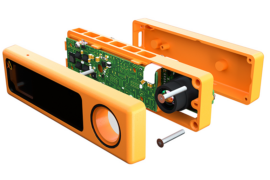Jed Pecchioli. President, APAC and EMEA Operations at America II, examines the needs of companies in the middle tiers, with particular reference to servicing requirements in the forthcoming IoT device boom…
At the moment there’s a large section of the electronics market that looking to fulfill product briefs that will clearly require them to reach outside of the traditional ‘entirely franchise’ or ‘entirely independent’ distribution models.
We’re on the cusp of an enormous boom in IoT devices. IDC has predicted that the IoT market will grow from $1.9 trillion in 2013 to $4.6 trillion by 2018, with a CAGR of 19%. This has attracted the attention, in particular, of many of the ‘middle tier’. Increasingly, we see companies in the (per-se) second and third tier brackets (I tend to think, roughly, of roughly sub-$500M OEMs and ODMs) as increasingly hungry to exploit ‘long tail’ opportunities such as The IoT.
Generally speaking, OEMs/ODMs designing IoT parts are looking for a high mix / low volume (HMLV) supplier that can support their complex supply chain needs. What’s more, in the vast majority of cases IoT devices are most-appropriately constructed using slightly older components. Why construct a passive parking sensor using an up-to-the-minute 20nm microprocessor, after all, when a 180nm microprocessor will be much more economical?
This combination of factors means that, for those mid-tier OEMs/ODMs looking to source components for IoT products, the tier one ‘franchise players’ generally won’t be the right fit. These companies tend to spend a great deal of time trying to keeping assets liquid and turnover high. They favour larger customers looking for high-volume, immediate, high-margin supply. ‘Just in time’ is the order of the day, and ‘first-tiers’ will generally be more averse to stock-holding. Their business model is also simply not geared to the supply of out-of-production parts.
However companies that too narrowly define their offerings as exclusively ‘independent’ often don’t present a 100% match to for the needs of the ‘neglected middle’ either. If they find it hard to guarantee volumes or supply, or cannot support scheduled business, that’s not going to be a ‘meeting of minds’. And, quite rightly, these second and third tier companies will not accept any shortcomings in quality control processes.
Many OEMs and ODMs playing in this space use both franchise and independents in order to get the balance of services they need. However, as they’ve found, this approach can be time-consuming and expensive.
We believe the best-suited option for these companies is a distribution that can offer them a wide range of reliable, high volume, guaranteed franchise lines, boutique lines, alongside heritage, reliability and credibility. However these businesses are also going to value some wider ‘open market’ capabilities and value-add services such as inventory management where appropriate.
We’re attempting to show businesses in the second and third tiers looking at IoT opportunities that there’s a ‘third way’. There’s big money in The IoT, and we’re determined to help them get at it.








Comments are closed.